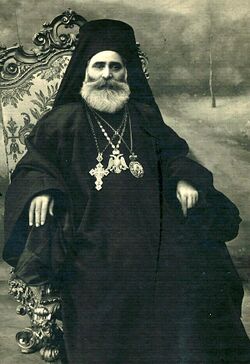New calendarists
The new calendarists are people who have adopted a new calendar, thus replacing the previous one, and also people who are advocating such a change within some group. Historically, most changes of calendar have been marked by debates between those who wanted to adopt some new calendar (often seen as innovators) and those who opposed such change (often seen as traditionalists).
In the history of Christianity, such debates were initiated after 1582, when the Roman Catholic Church transitioned from the ancient Julian calendar to the new Gregorian calendar.[1] During the Early Modern period, this change has sparked debates throughout Western Christianity, particularly in Protestant countries, where proponents of the new calendar were often seen as papists.
Eventually, the new calendarists prevailed, and by the 18th century, the Gregorian Calendar was officially adopted even in Protestant countries as the civil calendar, but still faced some opposition from smaller groups. In the Kingdom of Great Britain, the new calendar was officially introduced in 1752.[2]
Around the same time, debates between new calendarists and traditionalists were also going on within several Eastern Catholic Churches. Those debates were focused mainly on ritual questions, and ended in various compromises. The need for preservation of ritual differences, including various questions related to liturgical calendar, was consequently acknowledged by Rome.[3]
New calendarists in Eastern Christianity
In Eastern Christianity, new calendarists were often faced with additional challenges. In various Eastern Orthodox and Oriental Orthodox churches, as well as in East-Syriac Orthodox churches, activities of new calendarists have been marked by prolonged debates and recurring disputes, that in some cases resulted in internal conflicts and open schisms.[4]
Since 1923, when the Revised Julian calendar was devised, several Eastern Orthodox Churches have introduced partial changes into their liturgical calendars.[5] Those changes were based on the application of the Revised Julian calendar for the liturgical celebration of immovable feasts (including Christmas), thus reducing the use of the old Julian calendar to liturgical celebration of moveable feasts (feasts of the Easter cycle).[6]
Thus, the practice of dual calendar use was introduced, and consequently accepted by senior patriarchates of Constantinople, Alexandria and Antioch, as well as: Bulgarian Orthodox Church, Church of Greece, Cypriot Orthodox Church, Romanian Orthodox Church, Czech and Slovak Orthodox Church, Albanian Orthodox Church, Estonian Apostolic Orthodox Church, and most of the Orthodox Church in America.
Churches that still use only the Julian calendar are: Patriarchate of Jerusalem, Russian Orthodox Church, Serbian Orthodox Church (including the uncanonical Macedonian Orthodox Church and Montenegrin Orthodox Church), Georgian Orthodox Church, Orthodox Church of Ukraine, Ukrainian Orthodox Church (Moscow Patriarchate), Autonomous Monastic State of the Holy Mountain.
In Eastern Orthodoxy, issues related to calendar reform did not produce break of communion or schisms between canonical churches, bit they did caused disputes and internal schisms within some churches. The result of those conflicts was the emergence of the Old Calendarist movement, and consequent creation of separate churches, thus breaking the communion with those mother churches that accepted the calendar reform.[7]
Issues related to calendar reform were one of the main reasons for schism within the Assyrian Church of the East, that introduced new calendar in 1964. Opponents of the reform seceded and formed the Ancient Church of the East.[8] .
See also
- Adoption of the Gregorian calendar
- French revolutionary calendar
- Revised Julian calendar
- Old Calendarists
References
- ↑ Dershowitz & Reingold 2001, p. 47, 49.
- ↑ Dershowitz & Reingold 2001, p. 49.
- ↑ Galadza 2007, p. 291-318.
- ↑ Clogg 2002, pp. 2, 10-13.
- ↑ Dershowitz & Reingold 2001, p. 49, 70.
- ↑ Clogg 2002, pp. 9-10.
- ↑ Clogg 2002, pp. 8-9.
- ↑ Baum & Winkler 2003, p. 148-149, 154.
Sources
- Baum, Wilhelm; Winkler, Dietmar W. (2003). The Church of the East: A Concise History. London-New York: Routledge-Curzon. ISBN 9781134430192. https://books.google.com/books?id=CnSCAgAAQBAJ.
- Clogg, Richard (2002). Minorities in Greece: Aspects of a Plural Society. C. Hurst & Co. Publishers. ISBN 9781850657057. https://books.google.com/books?id=-71s8jEHWJsC.
- Dershowitz, Nachum; Reingold, Edward M. (2001). Calendrical Calculations: Millennium Edition. Cambridge: Cambridge University Press. ISBN 9780521777520. https://books.google.com/books?id=5r_kSKE4OdYC.
- Galadza, Peter (2007). "Eastern Catholic Christianity". The Blackwell Companion to Eastern Christianity. Malden, MA: Blackwell Publishing. pp. 291–318. ISBN 9780470766392. https://books.google.com/books?id=fHtSuvaVAAoC.


